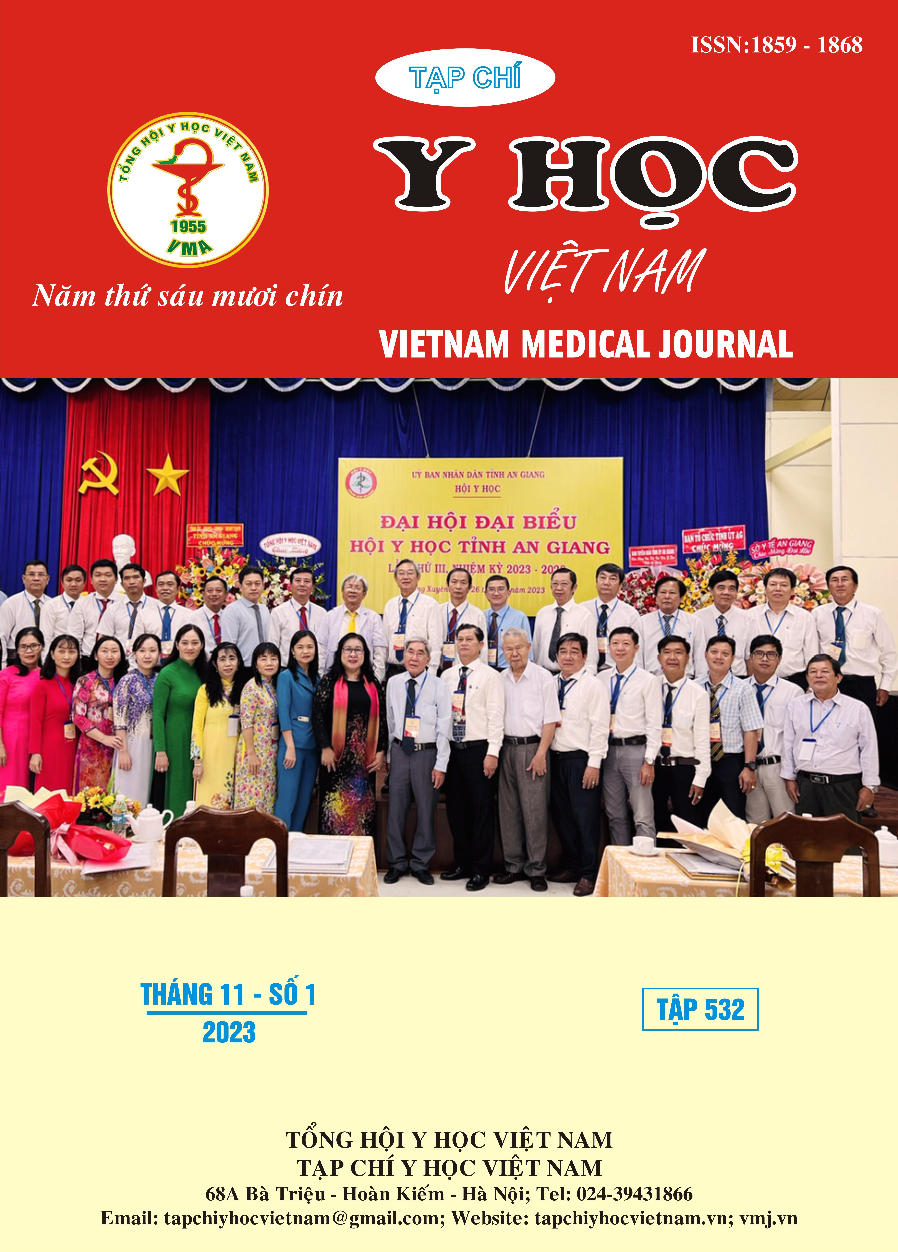REVIEW CLINICAL, PARACLINICAL CHARACTERISTICS AND OUTCOMES IN VIETNAMESE WOMEN WITH MICROINVASIVE BREAST CARCINOMA AT K HOSPITAL
Main Article Content
Abstract
Objective: Describe the clinical, paraclinical characteristics and treatment outcomes of patients with microinvasive breast carcinoma (MIC) at K Hospital. Methods: A descriptive retrospective study was conducted on female patients diagnosed with MIC from 2015 to 2022 at K Hospital. Result: 76 patients with available follow-up information were included. The median follow-up time was 48 months (range: 9-94 months). The 5-year disease-free survival (DFS) and 5-year overall survival (OS) rates are 90% and 100%, respectively. The mean age of the study group was 49.61 ± 10.4 years. The average tumor size was 3.2 ± 1.6 cm, with 40 patients (52.6%) having tumors ≥ 3 cm. The majority of patients (94.7%) presented with palpable mass, and the incidence of nipple discharge was 13.1%. Microcalcifications were observed in 37 patients (48.7%) on mammography. Associated carcinoma in situ lesions included 72 DCIS (94.7%), 1 LCIS (1.3%) and 3 Paget's disease (3.9%). Most DCIS lesions have high histologic grade, accounting for 84.2%. The rate of lymph node metastasis was 3.9%, and estrogen receptor positivity was observed in 32 patients (42.1%). Her2 of microivasive components results were available for 61 patients, with 51.3% show positive Her2 status. The proportions of patients receiving adjuvant radiation, chemotherapy, targeted therapy, and endocrine therapy were 22.4%, 82.9%, 23.7%, and 42.1%, respectively. 4 cases were recurrence, including 2 local and regional recurrences and 2 distant metastases. Conclusion: MIC presents various clinical and paraclinical features that differ from DCIS. The treatment of MIC includes surgery, chemotherapy, and endocrine therapy, with the possibility of incorporating targeted therapy for good results. Long-term surveillance is essential for a more comprehensive evaluation of potential recurrence.
Article Details
Keywords
Microinvansive breast carcinoma.
References
2. Han, S. et al. Clinical and imaging characteristics of breast ductal carcinoma in situ with microinvasion. J. Appl. Clin. Med. Phys. 22, 293–298 (2020).
3. Dershaw, D. D., Abramson, A. & Kinne, D. W. Ductal carcinoma in situ: mammographic findings and clinical implications. Radiology 170, 411–415 (1989).
4. Dória, M. T. et al. Development of a Model to Predict Invasiveness in Ductal Carcinoma In Situ Diagnosed by Percutaneous Biopsy-Original Study and Critical Evaluation of the Literature. Clin. Breast Cancer 18, e805–e812 (2018).
5. Sue, G. R., Lannin, D. R., Killelea, B. & Chagpar, A. B. Predictors of microinvasion and its prognostic role in ductal carcinoma in situ. Am. J. Surg. 206, 478–481 (2013).
6. Lyons, J. M., Stempel, M., Van Zee, K. J. & Cody, H. S. Axillary node staging for microinvasive breast cancer: is it justified? Ann. Surg. Oncol. 19, 3416–3421 (2012).
7. Kim, M. et al. Microinvasive Carcinoma versus Ductal Carcinoma In Situ: A Comparison of Clinicopathological Features and Clinical Outcomes. J. Breast Cancer 21, 197–205 (2018).
8. Wang, L. et al. Clinicopathologic characteristics and molecular subtypes of microinvasive carcinoma of the breast. Tumour Biol. J. Int. Soc. Oncodevelopmental Biol. Med. 36, 2241–2248 (2015).
9. Padmore, R. F. et al. Microinvasive breast carcinoma: clinicopathologic analysis of a single institution experience. Cancer 88, 1403–1409 (2000).


